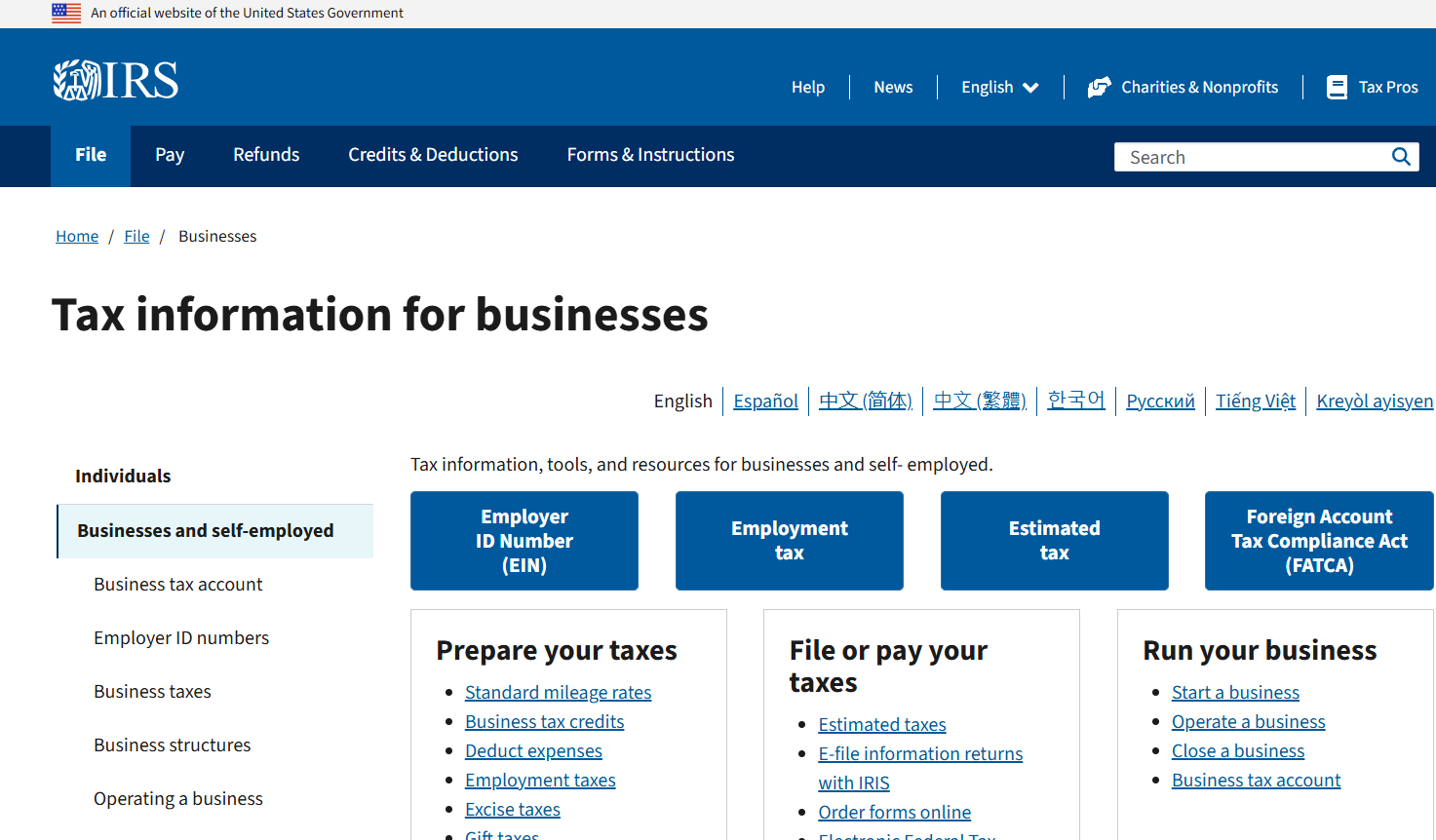3.8% Medicare Tax on Net Investment Income and .9% Additional Medicare Tax on Wage and Self-Employment Income
by Gregory S. Dowell, CPA
Two new taxes in 2013, the 3.8% Medicare tax on net investment income and the 0.9% additional Medicare tax on wage and self-employment income, will potentially add thousands of dollars to the tax bills of high-income Americans in 2013. These two taxes will need to be taken into consideration and action should be taken, which will typically mean increasing wage withholding or increasing estimated tax payments. The following is a summary of these two new taxes:
3.8% Medicare contribution tax
This new tax will only affect taxpayers whose adjusted gross income (AGI) exceeds $250,000 for joint filers and surviving spouses, $200,000 for single taxpayers and heads of household, and $125,000 for a married individuals filing separately. These threshold amounts are not indexed for inflation. As a result, over the years inflation will cause more taxpayers to become subject to the 3.8% tax.
AGI consists of gross income minus adjustments to income, such as the IRA deduction. If the foreign earned income exclusion was claimed, the excluded income must be added back to calculate the 3.8% tax.
If AGI is above the threshold indicated above ($250,000, $200,000 or 125,000), the 3.8% tax will apply to the lesser of (1) net investment income for the tax year or (2) the excess of AGI for the tax year over the threshold amount. The key is that this tax will be in addition to the income tax that applies to that same income.
As an example, assume a married couple has AGI of $270,000 for 2013, of which $100,000 is net investment income. They would pay a Medicare contribution tax on only the $20,000 amount by which their AGI exceeds their threshold amount of $250,000. That is because the $20,000 excess is less than their net investment income of $100,000. Thus, the couple’s Medicare contribution tax would be $760 ($20,000 × 3.8%).
Now assume that the couple’s AGI was $350,000. Because their AGI exceeds their threshold amount by $100,000, they would pay a Medicare contribution tax on their full $100,000 of net investment income. Their Medicare tax would then be $3,800 ($100,000 × 3.8%).
Recall that the calculation depends on net investment income. The “net investment income” that is subject to the 3.8% tax consists of interest, dividends, annuities, royalties, rents, and net gains from property sales (including gains from home sales that are not excluded – see below). Income from an active trade or business is not included in net investment income, nor is wage income.
However, passive business income is subject to the Medicare contribution tax. Thus, rents from an active trade or business are not subject to the tax, but rents from a passive activity are subject to it. Income from a business of trading financial instruments or commodities is also included in net investment income.
Income that is exempt from income tax, such as tax-exempt bond interest, is likewise exempt from the 3.8% Medicare tax. Thus, switching some of your taxable investments into tax-exempt bonds can reduce your exposure to the tax. Of course, this should be done with due regard to your income needs and investment considerations.
Home sales – If you sell your main home, you may be able to exclude up to $250,000 of gain, or up to $500,000 for joint filers, when figuring your income tax. This excluded gain will not be subject to the 3.8% tax. However, gain that exceeds the limit on the exclusion will be subject to the tax. Gain from the sale of a vacation home or other second residence, which does not qualify for the income tax exclusion, will also be subject to the 3.8% tax.
For example, say that a married couple has AGI of $200,000 for 2013 and in addition sold their main home for a $540,000 gain. The couple qualified for the full $500,000 exclusion of gain on the sale, leaving only $40,000 of taxable gain. As a result, the couple won’t be subject to the 3.8% tax, because their total AGI ($200,000 + $40,000) will fall below the $250,000 threshold.
But if the gain on the home sale was $680,000, of which $180,000 was taxable, the couple would be subject to the 3.8% tax on $130,000 of the gain. That is the amount by which their total AGI of $380,000 ($200,000 + $180,000) exceeds their $250,000 threshold.
Retirement plan distributions – Distributions from qualified retirement plans, such as pension plans and IRAs, are not subject to the 3.8% tax. However, those distributions may push your AGI over the threshold that would cause other types of investment income to be subject to the tax.
This makes Roth IRAs more attractive for higher-income individuals, because qualified Roth IRA distributions are neither subject to the 3.8% tax nor included in AGI. Conversely, distributions from traditional IRAs will be included in AGI, except to the extent of after-tax contributions, although they will not be subject to the Medicare contribution tax.
Estimated Taxes – The 3.8% Medicare tax must be included in the calculation of estimated tax. Accordingly, estimated taxes may have to be made or increased to avoid a penalty.
Additional 0.9% Medicare tax on wage and self-employment income
Starting in 2013, some high wage earners will pay an extra 0.9% Medicare tax on a portion of their wage income, which is in addition to the 1.45% Medicare tax that all wage earners pay. The 0.9% tax applies to wages in excess of $250,000 for joint filers, $125,000 for a married individuals filing separately, and $200,000 for all others. The 0.9% tax applies only to employees, not to employers.
For joint filers, the additional tax applies to the spouses’ combined wages. For example, suppose that a married couple earns combined wages of $300,000 in 2013. On a joint return, they will pay Medicare tax of $3,625 ($250,000 × 1.45%) on their first $250,000 of wages and $1,175 on their combined wages the excess of $250,000 ($50,000 × 2.35%), for a total Medicare tax of $4,800.
Once an employee’s wages reach $200,000 for the year, the employer must begin withholding the additional 0.9% tax from the wages. However, this withholding may prove insufficient if the employee has additional wage income from another job or if the employee’s spouse also has wage income. To avoid that result, an employee may request extra income tax withholding by filing a new Form W-4 with the employer. The extra withholding can then be applied to the liability for the additional 0.9% tax.
Self-employment tax – An extra 0.9% Medicare tax also applies to self-employment income for the tax year in excess of $250,000 for joint filers, $125,000 for married individuals filing separately, and $200,000 for all others. This 0.9% tax is in addition to the regular 2.9% Medicare tax on all self-employment income. The $250,000, $125,000, and $200,000 thresholds will be reduced by the taxpayer’s wage income.
For example, if a married couple has combined self-employment income of $300,000 for 2013 (and no wages), they will pay Medicare tax of $7,250 ($250,000 × 2.9%) on the first $250,000 of that income and $1,900 on the excess of their combined self-employment income over $250,000 ($50,000 × 3.8%), for a total Medicare tax of $9,150.
It should also be noted that, while self-employed individuals can claim half of their self-employment tax as an income tax deduction, the additional 0.9% tax will not generate any income tax deduction.










